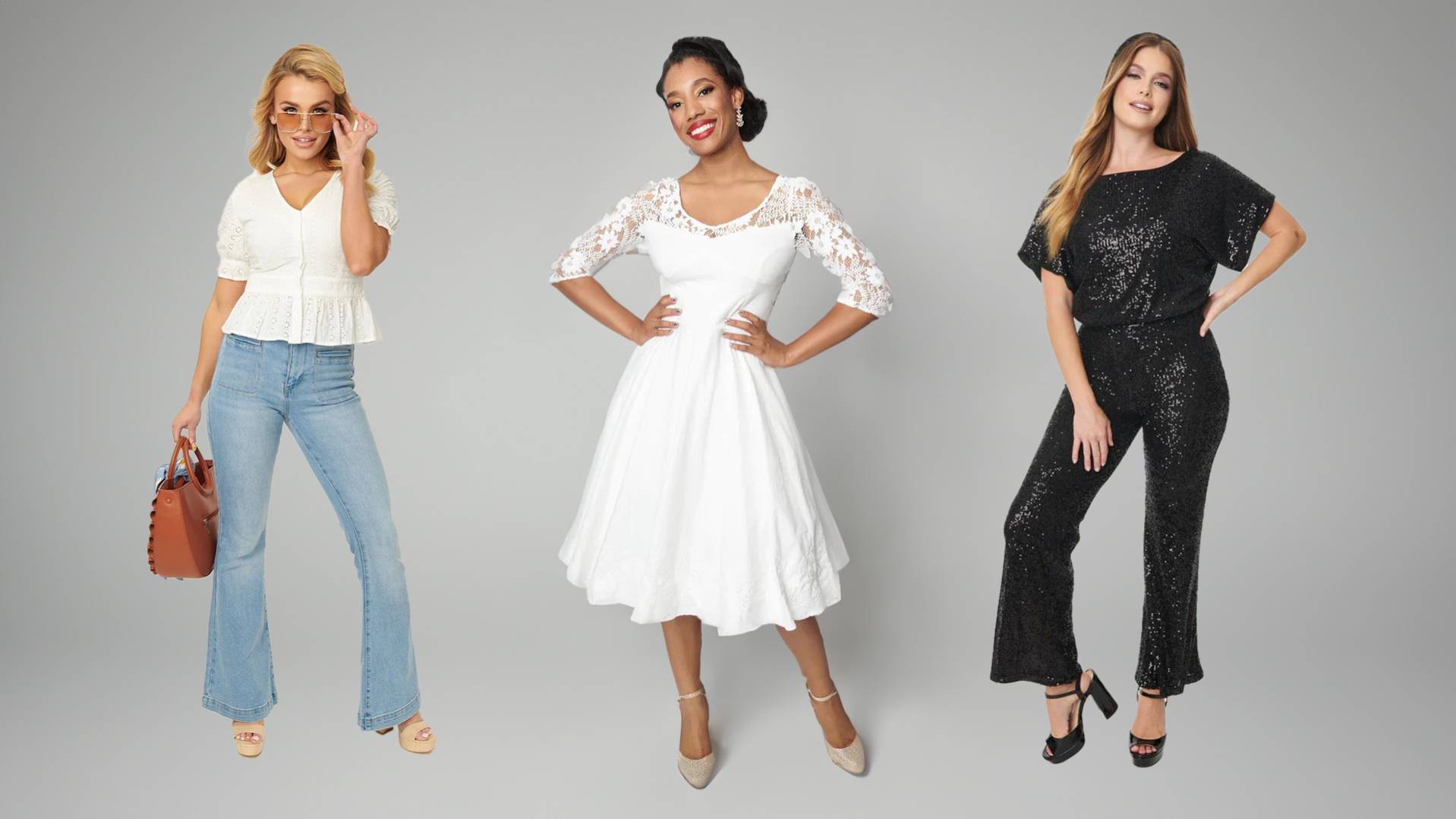Common Fabric Types Used in Branded Clothing and What They Mean
Common Fabric Types Used in Branded Clothing and What They Mean
Blog Article
The Significance of Sustainable Apparel: How It Impacts the Setting and Your Closet
Lasting apparel is significantly recognized for its crucial function in lessening the ecological influence of the rapid fashion business. By focusing on green products and ethical manufacturing methods, it deals with pushing environmental worries. This shift not only profits the earth but likewise influences customer selections, causing an extra thoughtful strategy to closet monitoring. Comprehending these dynamics elevates vital concerns concerning fashion's future and individual obligation fit it.
The Environmental Footprint of Rapid Fashion

Benefits of Lasting Materials
Sustainable materials supply substantial benefits, specifically via environmentally friendly fabric selections that decrease ecological damage. These materials additionally show durability and long life, minimizing the requirement for frequent substitutes. As an outcome, they add to a more lasting garment industry and promote liable consumer behavior.
Eco-Friendly Textile Options
While the fashion industry has actually long been related to fast fads and environmental injury, the surge of eco-friendly fabric options offers a transformative chance. Sustainable products such as natural cotton, hemp, and Tencel have actually gained appeal as a result of their reduced ecological impact. These materials are commonly produced without harmful chemicals and require less water, lowering their carbon footprint - Branded Clothing. Furthermore, many green materials are biodegradable, contributing to a circular economy by reducing waste. Selecting sustainable materials not only sustains ecologically accountable techniques however additionally advertises healthier ecological communities. As consumers come to be more conscious of their buying power, the need for environmentally friendly textiles encourages brand names to introduce and take on even more sustainable production approaches, ultimately profiting the earth and future generations
Longevity and Longevity Benefits
Lots of customers are significantly recognizing the toughness and long life advantages of lasting products in their apparel choices. Unlike conventional materials, lasting products such as natural cotton, hemp, and recycled polyester are crafted to withstand wear and tear, resulting in garments that last longer. This minimized regularity of substitute not just conserves customers cash gradually yet also decreases waste produced by fast fashion. On top of that, sustainable clothing frequently utilizes environmentally friendly production methods that enhance textile stamina, contributing to a decrease in the general carbon impact. By purchasing sturdy apparel, customers can cultivate a more sustainable closet while delighting in top notch pieces that maintain their visual and capability gradually. Longevity and durability stand as essential benefits of choosing lasting products.
Reducing Waste Via Sustainable Practices
Lowering waste in the fashion business can be accomplished via ingenious practices such as upcycling and repurposing materials. Additionally, adopting minimalist wardrobe approaches motivates customers to focus on high quality over amount, eventually reducing apparel usage. With each other, these approaches add greatly to an extra sustainable clothes model.
Upcycling and Repurposing Materials
Upcycling and repurposing products have become innovative strategies in the fashion business, changing discarded fabrics into useful brand-new products. This technique not just minimizes waste but additionally encourages imagination and individuality in garments design. By taking old garments and materials, developers can develop unique pieces that mirror individual style while lowering the demand for new sources. In addition, upcycling usually requires less energy and water contrasted to traditional manufacturing processes, greatly lowering the environmental impact of style. As customers come to be more knowledgeable about sustainability, the popularity of upcycled garments proceeds to climb, advertising a round economic situation. Ultimately, these practices add to a much more sustainable future, where fashion prioritizes ecological health and wellness over rapid manufacturing and usage.

Minimalist Wardrobe Techniques
As individuals progressively seek to reduce their environmental impact, adopting minimal closet methods has gained traction as a reliable approach to lasting style. These methods highlight high quality over quantity, motivating customers to curate a smaller sized collection of flexible, durable clothing. By concentrating on ageless pieces that can be mixed and matched, people can reduce the frequency of purchases and ultimately decrease waste.Additionally, minimalism promotes mindful consumption, advising buyers to assess the environmental and ethical ramifications of their selections. This approach not just promotes a more sustainable way of living however additionally simplifies everyday decision-making relating to outfit. As people accept minimal concepts, they contribute to a style culture that values sustainability and accountable consumerism, inevitably causing a much more eco-conscious society.
The Function of Moral Labor in Lasting Fashion
While many consumers are progressively familiar with the environmental repercussions of their clothing selections, the importance of moral labor practices in sustainable style can not be ignored. Moral labor includes reasonable salaries, secure working conditions, and regard for employees' legal rights, forming the backbone of liable fashion production. Brand names that focus on moral labor not only boost neighborhoods yet likewise set a criterion for accountability in the industry.Moreover, the integration of honest practices cultivates transparency, allowing customers to make informed choices regarding their acquisitions. This technique contrasts dramatically with fast fashion's exploitative labor designs, which typically focus on earnings over individuals. By supporting business dedicated to honest labor, customers add to a system that values human self-respect together with environmental sustainability. Subsequently, moral labor is not just an add-on; it is necessary to the more comprehensive mission of lasting style, guaranteeing that the mission for eco-friendliness does not come at the cost of human civil liberties.
The Influence of Sustainable Clothes on Carbon Emissions
Sustainable clothing has the possible to considerably decrease carbon emissions related to the style industry. Traditional garment manufacturing contributes especially to greenhouse gas exhausts, mainly as a result of energy-intensive manufacturing processes and making use of non-renewable resources. On the other hand, sustainable style concentrates on eco-friendly products, such as natural cotton or recycled fibers, which usually call for much less power to produce.Moreover, lasting brands have a tendency to take on more reliable production practices, minimizing waste and decreasing overall exhausts. By prioritizing durability and ageless design, lasting clothes urges customers to buy much less regularly, additional reducing the carbon footprint related to overconsumption.Additionally, lots of lasting brands are devoted to openness in their supply chains, enabling consumers to make enlightened choices that align with their worths. Inevitably, moving in the direction of sustainable clothes can bring about a significant decrease in carbon emissions, adding to a healthier planet and a more sustainable future for the fashion business.
Supporting Local Economic Situations With Sustainable Choices
The change towards lasting clothes not only addresses ecological worries yet also significantly benefits regional economic climates. By picking lasting style, customers typically sustain neighborhood craftsmens and small services, enhancing neighborhood durability. These ventures typically operate on a smaller range, focusing on workmanship and moral practices over mass production.Investing in locally made lasting clothing fosters job creation and stimulates economic growth within neighborhoods. As consumers become more aware of the ecological influence of their acquisitions, they progressively seek products that mirror their worths. This demand encourages neighborhood suppliers to embrace sustainable practices, adding to a round economy.Moreover, sustaining local companies minimizes transport discharges, aligning with eco-conscious consumer habits. The interconnectedness of lasting garments and neighborhood economies emphasizes the essential duty that private choices play in advertising both financial and ecological health. By cultivating these regional connections, areas can flourish while also working in the direction of an extra lasting future.
Transforming Your Closet: Tips for a Sustainable Wardrobe
As individuals look for to minimize their environmental impact, changing a wardrobe right into a sustainable closet becomes an essential action. you could try these out One effective method is to review existing clothes, maintaining only things that are worn routinely which align with sustainability goals. Focusing on high quality over quantity is important; spending in resilient items from environment-friendly brand names can significantly lower waste.Additionally, integrating pre-owned items can revive a closet while minimizing environmental damages. Organizing apparel swaps with pals or giving away extra items can even more advertise sustainability.When purchasing, people should seek materials that are organic, recycled, or eco-friendly, and stay clear of fast style merchants - Branded Clothing. Ultimately, practicing mindful consumption by thoughtfully thinking about each acquisition can add to an extra lasting way of living. By executing these ideas, one can develop a wardrobe that reflects personal style while supporting ecological stewardship
Regularly Asked Inquiries
Just How Can I Identify Sustainable Clothes Brands?
To recognize lasting clothing brands, one should research materials used, check for accreditations like Fair Trade, and take a look at the brand's transparency regarding their production procedures, labor techniques, and ecological impact, guaranteeing environment-friendly and moral methods are prioritized.
What Are the Prices Related To Sustainable Fashion?
The prices connected with lasting fashion can vary considerably. Higher manufacturing expenditures, moral sourcing, and green materials commonly cause raised list prices, which might discourage some customers while attracting ecologically mindful customers.
Can Lasting Clothing Be Fashionable and Trendy?
Sustainable apparel can undoubtedly be trendy and stylish. Developers progressively focus on innovative products and ethical production methods, verifying that fashion and sustainability can exist side-by-side. Consumers currently have diverse choices that mix looks with environmental consciousness.
Exactly How Does Washing Clothes Affect Their Sustainability?
Cleaning clothing considerably influences sustainability by consuming water and power, adding to air pollution, and causing microplastic launch. Frequent cleaning can more tips here degrade materials, reducing their lifespan and boosting the need for substitutes, inevitably intensifying environmental problems.
What Is the Life-span of Sustainable Garments Contrasted to Rapid Style?
The life-span of lasting clothing typically surpasses that of quick fashion things, often long lasting a number of years as a result of high quality products and workmanship. On the other hand, rapid style garments might weaken promptly, demanding even more frequent replacements. Sustainable clothes is progressively identified for its essential duty in lessening the environmental effect of the rapid fashion industry. While numerous consumers are progressively mindful of the ecological effects of their apparel choices, the relevance of honest labor techniques in lasting style can not be forgotten. Branded Clothing. Lasting apparel has the possible to substantially decrease carbon emissions associated with the style market. In contrast, sustainable style concentrates on green materials, such as natural cotton or recycled fibers, which often call for much less energy to produce.Moreover, lasting brand names have a tendency to take on extra effective production methods, lessening waste and reducing overall emissions. By focusing on longevity and classic style, sustainable clothing urges consumers to purchase much less often, further minimizing the carbon impact connected with overconsumption.Additionally, lots of sustainable brand names are devoted to transparency in their supply chains, enabling consumers to make informed selections click here to find out more that line up with their worths
Report this page